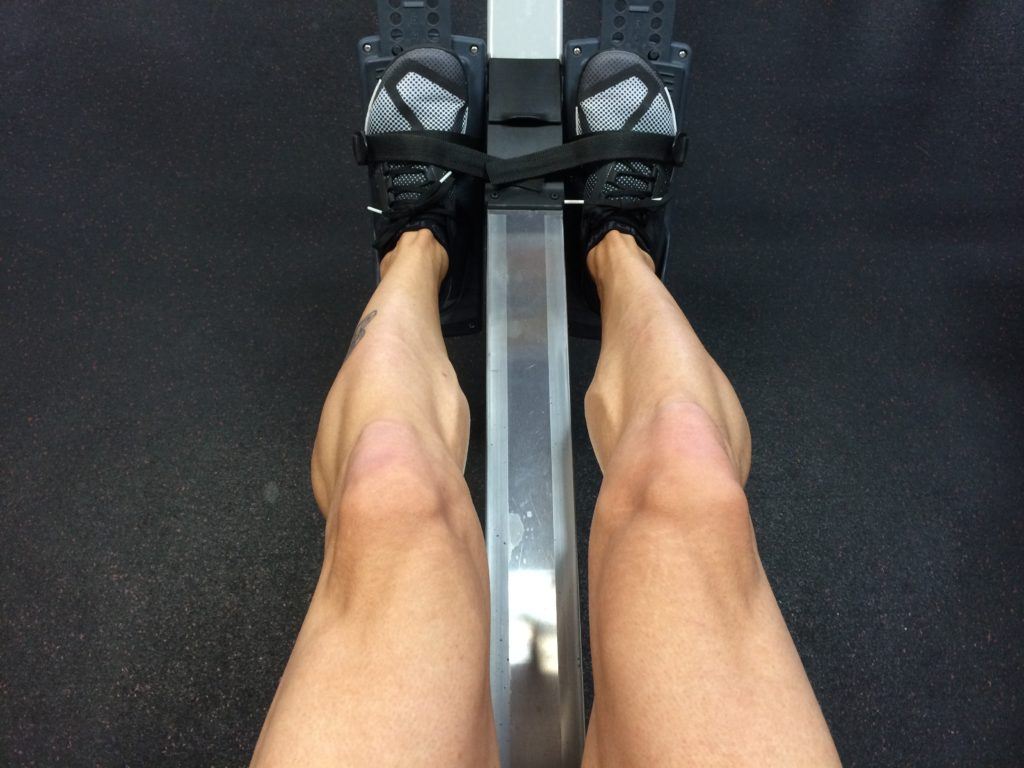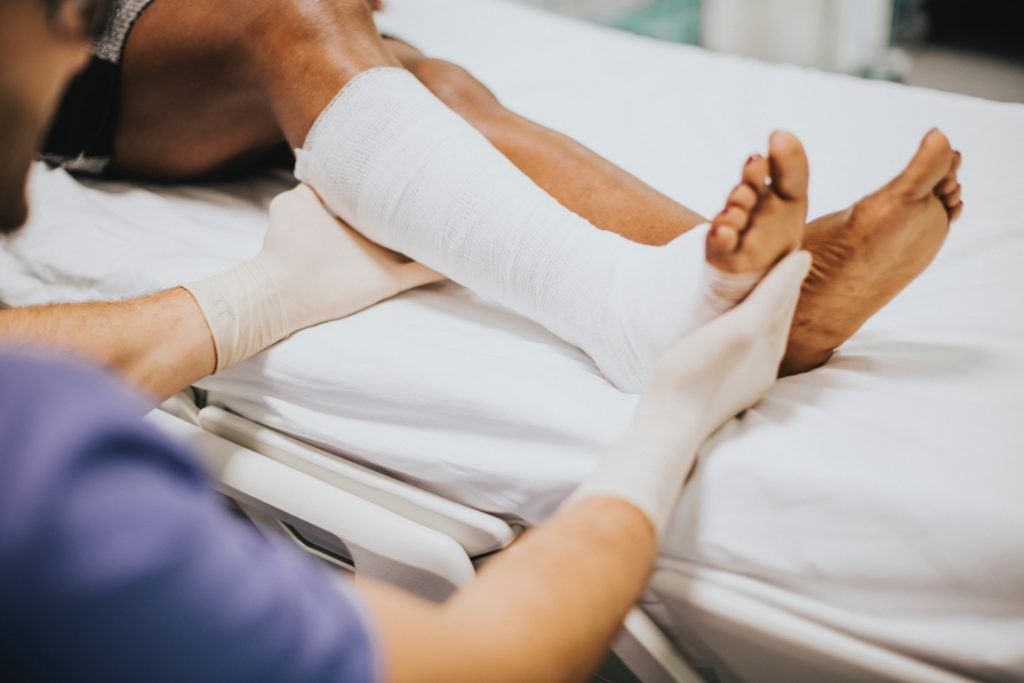Your tendons are tough bands of tissue that connect your muscles to your bones, allowing the force of your muscles to flow more easily throughout your body. This gives your movements greater stability, and some tendons can even store energy to help you move faster.
The peroneal tendons are very much the former kind. There are two in each foot and are found running side by side down the backs of your legs – right behind your ankle bones and down to the bottom of your foot.

The first peroneal tendon is attached to the outside of your mid-foot bone, while the other tendon is attached to the underside of your foot near the arch. These tendons stabilize your foot and ankle as they move, while also safeguarding them from potential spraining.
Because these tendons reside in the foot, they can be easily overworked, leading to ankle tendon pain or ankle bone pain. This pain can worsen over time, and eventually lead to peroneal tendonitis.
Below is a short guide about this condition, including its symptoms, causes, and possible treatment options to help you deal with your discomfort.
Contents
What is Peroneal Tendonitis?
Peroneal tendonitis is actually the common name for peroneal tendinopathy. Tendinopathy is the umbrella term for all the tendon injuries a person can develop, including tendonitis in your foot.
Tendonitis is typically characterized by the tendons becoming inflamed. However, it is important to note that inflammation of the tendons is an extremely rare cause for tendon pain.
The swelling or redness you may see does not necessarily indicate inflammation of the tendons themselves, but rather the areas surrounding your peroneal tendons.
Some doctors, however, may continue to use the term “tendonitis” simply out of habit when they are diagnosing your condition. Just know that most of the time, they do mean tendinopathy, and will treat your condition as such.
Peroneal Tendonitis Symptoms
Symptoms of Peroneal Tendonitis include pain in the back of your ankle that gradually worsens as time goes on, or any pain or instability in your foot that worsens when you put it under any sort of strain (such as standing or doing any sort of physical activity that involves your feet).
The above including if you feel pain when you attempt to turn your foot; or pain that travels up your lower legs when you run, means its possible you may have peroneal tendonitis.
Any swelling or unnatural warmth at the back of your ankle may also be a sign of peroneal tendonitis.
Acute vs. Chronic
Peroneal tendon injuries tend to be classified as either acute (meaning that your pain appears suddenly and without warning) or chronic (meaning that your pain is the result of many factors building up over time).

The symptoms listed above are classified as chronic, since they usually appear after constant wear and overuse in your peroneal tendons.
If left untreated for too long, your pain can also lead to painful tendon tears or even subluxation, which is when your tendons have slipped out of their normal positions in your foot.
Tears
There are two types of peroneal tendon tears: acute and degenerative. Symptoms of acute tears in your peroneal tendons are very similar to that of peroneal tendonitis, and are classified as a chronic injury.
Symptoms of degenerative tears can include any of the above symptoms, on top of sporadic pain felt on the outside of your ankles or a startling increase in the height of your foot’s arch.
Degenerative tears of your peroneal tendons may also be referred to as tendinosis.
Subluxation
Subluxation occurs when one or both of your peroneal tendons slip out of their normal positions.
Some people may be born with a condition that gives them different bone shapes or muscles in these areas, making them more susceptible to subluxation.
In other cases, subluxation can occur from previous trauma to the afflicted area or from a previous injury, such as a sprained ankle.
While the subluxation itself is typically classified as acute, it may also become chronic if you continuously damage or injure the tissues that stabilize the tendons.
Symptoms of this particular injury include feeling as if your peroneal tendons are snapping (around your ankle bones in particular), sporadic pain outside the ankle bones, or instability and a strange weakness in your ankle.
Causes of Peroneal Tendonitis
Most cases of tendon pain are due to overuse, and peroneal tendonitis is no exception. Because these tendons are found in the foot, they are typically more prone to injury than other types of tendons, especially in those who are more physically active.
Participation in Certain Sports or Activities
While keeping active and playing sports is most definitely encouraged, overworking your muscles and tendons can and often does lead to pain in your foot.

Typically, high-impact sports such as running, basketball, tennis, and even ballet can cause all kinds of foot problems – if you continue to push yourself past your limits, without allowing your body time to properly heal after an intense workout.
Excess walking or standing around for long periods of time, while not exactly sports, may also cause tendonitis in your ankle or foot.
Still, getting peroneal tendonitis is quite rare, even among those who work out more than they should. You are more likely to receive Achilles tendonitis, patellar tendonitis, or some other, more common form of foot injury instead.
However, this does not mean that you should dismiss the possibility of getting peroneal tendonitis just because of its rarity.
Poor or Ill-Fitting Shoes
This is another very common cause of foot injuries.
Shoes that are loose-fitting can make your foot slide around within it as you move, causing a painful friction that may irritate your peroneal tendons and the areas surrounding them.
Constantly wearing these kinds of shoes may also lead to a peroneal tendon subluxation, due to the possibility of the friction offsetting your tendons from their normal positions.
Underpronation (or Supination)
Your foot’s pronation is basically the way that it moves as you take a step forward.
Underpronation, also called supination, is when your foot rolls too far outward as you walk, resulting in the arches of your feet becoming excessively high.
These high arches can result in a wide variety of problems if left untreated, including peroneal tendonitis.
Failure to Properly Rehabilitate an Old Injury
Throwing yourself right back into your usual, active routine, without giving your old foot or ankle injuries enough rest, can worsen your symptoms. They may even result in new injuries.
You should always make sure to completely heal before taking on too much, and even then, you should always reintroduce any harsh activity over a measured amount of time, rather than all at once.
If you are unsure where you are at in your healing process, contact your doctor or physician.
Here’s a video showing more information on peroneal tendonitis.
Peroneal Tendonitis Treatment
There are both nonsurgical and surgical treatments for this condition. Keep in mind that most doctors will want to look at nonsurgical options first.
They may also misdiagnose peroneal tendon injuries, which can worsen the condition. If you feel that this is the case, then consult a foot surgeon for a second opinion.
Your doctor may ask you about your hobbies, occupation, or just about your daily schedule in general, to determine if you are perhaps overworking your peroneal tendons.
They may also ask about your medical history, including if you have had a previous foot or ankle injuries that may be the cause of your peroneal tendon pain now.
They will examine your foot for any pain, swelling, warmth, or weakness on the outer parts of your ankle to determine if you indeed have peroneal tendonitis.
If they cannot exactly determine the cause of your ankle tendon pain, then they may order an x-ray, ultrasound, or an MRI scan to get a clearer picture of what is going on with you.
Nonsurgical treatments for peroneal tendonitis include:
Wearing a Cast, Splint, or Brace
Immobilizing the foot in question allows the tendons time to properly heal.
A brace may additionally be provided to those who must perform activities that have them on their feet, either for an occupation or otherwise.
Specifically, braces are given to those who do activities that require repetitive ankle movements (including walking, running, etc.).
Medication
Anti-inflammatory drugs (whether taken orally or injected into the afflicted areas) may help reduce your pain, swelling, and redness.
Physical Therapy
During the initial few weeks, you should put either ice or a heat pack on the afflicted area for at least a few minutes every day, so as to reduce pain and swelling.

Once you notice your symptoms improving, ask your doctor if your healing has progressed enough for you to get back into exercising.
This should consist of mainly specialized stretches that will fortify your muscles and help to gradually improve your balance, as well as how much you can move or turn your ankle.
Here are a few stretches you can try:
Towel Stretch
- Sit on the ground with your feet straight out in front of you.
- Wrap a small towel around your toes and pull back on it gently, so as to allow your feet and lower legs to stretch. Hold this for about 30 seconds, rest for a moment, then repeat this stretch three (3) more times.
Standing Calf Stretch
- Face a wall and extend the afflicted foot toward it, with your toes pointed up.
- Slowly lean forward onto that foot until you feel a little pull on the back of your lower leg. Hold for 30 seconds. After a moment of rest, repeat this stretch three (3) more times on the same foot. If you have peroneal tendonitis in both feet, switch the foot leaning on the wall and repeat.
Standing Soleus Stretch
- Face a wall, with your injured leg behind you and your other leg forward against the wall. Your injured leg should be flat on the ground and your other leg should be bent a little at the knee.
- Turn your injured leg slightly in, toward your other leg, without raising your heel. Keep leaning into the wall with your other leg, until you feel your injured leg stretch a little. Hold for 30 seconds, rest for a moment, and repeat three (3) more times. Switch legs and repeat this process if you have tendonitis in your other leg as well.
Here’s a video showing examples of excercises you can do with peroneal tendonitis.
Is Surgery Required?
This depends on the type of injury you have. Nonsurgical treatments will usually be recommended so long as your peroneal tendon injury is not too severe or life-threatening.
Surgery for peroneal tendonitis is extremely rare, much like the condition itself, but it can be an option if none of the nonsurgical treatment options are reducing your pain.
If the tissue around your peroneal tendons is causing you pain, then you may have to undergo a tendon release, which is when a surgeon removes that tissue from your foot or the back of your leg.
If your condition has advanced to the point where a peroneal tendon tear has occurred, then you may have to undergo surgery to repair that tendon.
Healing Time
Peroneal tendonitis recovery time will depend on the kind of treatment your doctor has ordered for you. If you undergo nonsurgical treatments, it will take approximately six weeks for you to fully heal.
Of course, surgical treatments will take much longer to heal than nonsurgical ones.
You may also want to take your physical therapy sessions into account when calculating your overall healing time, as these sessions are a part of the healing process.
Healing times after surgeries tend to vary depending on the patient.
Conclusion
Your peroneal tendons are quite important to keep your steps and movements stable. Without them, it’s very difficult for us to walk or even just balance on our feet.
While peroneal tendonitis may be a rare injury, this does not make it any less painful. Still, it is simple enough to prevent and simpler still to treat, so if you follow this short guide and talk to your doctor about your condition, you will heal up again in no time.
Do you have any tips ankle tendon pain?

